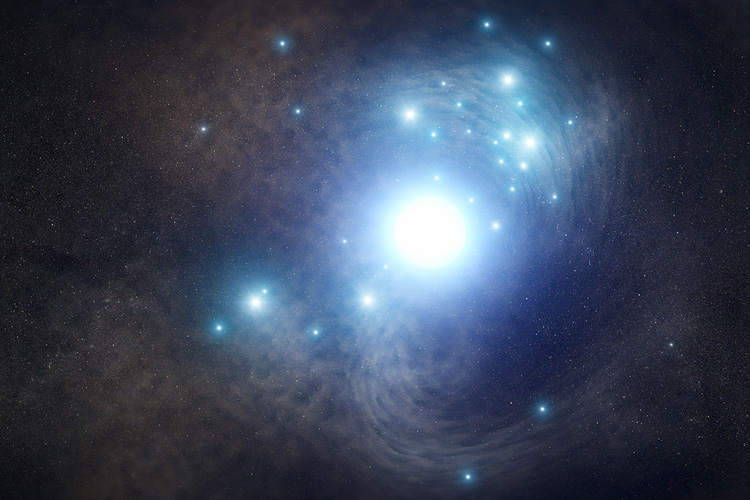Tracking down a star that disappeared 65 million years ago
A team of astronomers at UC Berkeley and elsewhere located a star that exploded in 2017, tying giant blue stars to a unique type of supernova

November 18, 2018
Astronomers may finally have tracked down the type of star that explodes with a distinctive but unusual signature: They show no evidence of hydrogen and helium, by far the most abundant elements in the universe.
Such explosions have been labeled Type Ic supernovae, and make up some 20 percent of all stars that explode when their cores collapse. Most, however, have been observed at such large distances that astronomers could not pinpoint what was there before the explosion blew it to smithereens.
But a team that included UC Berkeley astronomer Alex Filippenko got lucky.
Last year, after a Type Ic supernova dubbed SN 2017ein was discovered by astronomers in Arizona, the group dove into past photos of that region of the sky taken by NASA’s Hubble Space Telescope in search of its progenitor. In the archive from 2007, they found an image of a hot, bright blue object in the exact spot where the supernova was observed. It was located near the center of the relatively nearby spiral galaxy NGC 3938, roughly 65 million light years from Earth, which means the star exploded 65 million years ago.
Based on an assessment of the star by this and another team that discovered the same 2007 image, two possibilities exist for the source’s identity. The progenitor could be a single hefty star between 45 and 55 times the mass of our sun that had earlier shed its hydrogen and helium, perhaps blown off in an intense stellar wind.
Alternatively, it could have been a massive binary-star system in which one of the stars weighed between 60 and 80 solar masses and the other roughly 48 suns. In this latter scenario, pre-explosion, the stars were orbiting closely and interacted with each other. The more massive star was stripped of its hydrogen and helium layers by the close companion, and eventually exploded as a supernova.
This potential link between massive stars and Type Ic supernovae could yield insight into stellar evolution, including how the masses of stars are distributed when they are born in batches.
“We finally found a good candidate for the massive star that goes boom,” Filippenko said.
Filippenko’s team at the University of California’s Lick Observatory was led by Schuyler Van Dyk of the California Institute of Technology (Caltech) in Pasadena. His team’s paper was published in June in The Astrophysical Journal.
“Disentangling these two scenarios for producing Type Ic supernovas impacts our understanding of stellar evolution and star formation, including how the masses of stars are distributed when they are born, and how many stars form in interacting binary systems,” explained team member Ori Fox of the Space Telescope Science Institute (STScI) in Baltimore, Maryland. “And those are questions that not just astronomers studying supernovas want to know, but all astronomers are after.”
Financial support for Filippenko’s research group at UC Berkeley was provided by NASA through a grant from the Space Telescope Science Institute, the National Science Foundation, TABASGO Foundation, Christopher R. Redlich Fund, and Miller Institute for Basic Research in Science. Research at Lick Observatory is partially supported by a generous gift from Google and contributions from numerous individuals. A major upgrade of the Kast spectrograph on the Shane 3-meter telescope at Lick was made possible through generous gifts from the Heising-Simons Foundation as well as William and Marina Kast.